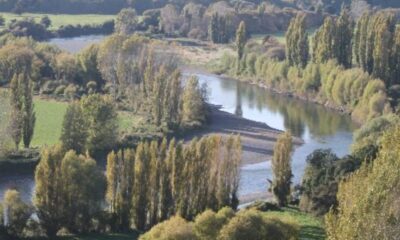Science
Kiwi Scientist Roy Kerr Vindicated 60 Years After Black Hole Theory

The scientific community has affirmed the groundbreaking theory of New Zealand physicist Roy Kerr, whose work on black holes has gained renewed recognition 60 years after its inception. Kerr’s equations, formulated in 1963, provided the first precise description of rotating black holes, fundamentally altering the landscape of theoretical physics.
Kerr’s theory emerged during a time when the existence of black holes was not widely accepted. The term “black hole” itself was not even coined until 1967, following Kerr’s initial mathematical framework. His insight was a significant leap in understanding the implications of Albert Einstein‘s theory of general relativity, which posited that massive objects could warp spacetime.
Revolutionizing Physics
Kerr’s discovery offered a solution to the problem of how rotating black holes could exist in the universe. Prior to his work, scientists struggled to reconcile the behavior of these enigmatic objects with the laws of physics. His equations revealed that black holes could possess angular momentum, a concept that has since been confirmed by various astrophysical observations.
Decades later, advancements in technology and observational techniques have validated Kerr’s theories. Recent findings from the Event Horizon Telescope, which captured the first image of a black hole in 2019, have provided further evidence supporting Kerr’s model. These developments have solidified his place as a pivotal figure in modern physics.
Kerr’s contributions extend beyond his equations. His work has inspired generations of physicists, paving the way for new research and explorations into the nature of black holes. As researchers continue to investigate the mysteries of the universe, Kerr’s legacy remains integral to the ongoing discourse in astrophysics.
Scientific Impact and Recognition
The renewed interest in Kerr’s theory highlights the importance of historical scientific contributions in contemporary discussions. As researchers analyze data from black hole mergers and cosmic events, they often reference Kerr’s equations as foundational to their work. This not only underscores the validity of his theory but also emphasizes the continuity of scientific inquiry.
In recognition of his achievements, Kerr has received numerous accolades throughout his career. His work has been influential in both theoretical and applied physics, contributing to our understanding of gravitational waves and the dynamic behavior of black holes.
Kerr’s experience serves as a reminder of the challenges faced by scientists whose ideas challenge prevailing norms. His perseverance in advancing the study of black holes has ultimately led to a richer understanding of the universe. As we continue to explore the cosmos, the significance of his work will undoubtedly resonate for years to come.
In conclusion, Roy Kerr‘s revolutionary theory has not only stood the test of time but has also been validated by modern scientific advancements. His contributions mark a significant chapter in the ongoing story of physics and our quest to understand the fundamental forces that shape our universe.
-

 World3 months ago
World3 months agoTest Your Knowledge: Take the Herald’s Afternoon Quiz Today
-

 Sports3 months ago
Sports3 months agoPM Faces Backlash from Fans During Netball Trophy Ceremony
-

 Lifestyle3 months ago
Lifestyle3 months agoDunedin Designers Win Top Award at Hokonui Fashion Event
-

 Sports3 months ago
Sports3 months agoLiam Lawson Launches New Era for Racing Bulls with Strong Start
-

 Lifestyle3 months ago
Lifestyle3 months agoDisney Fan Reveals Dress Code Tips for Park Visitors
-

 World4 months ago
World4 months agoCoalition Forms to Preserve Māori Wards in Hawke’s Bay
-

 Health3 months ago
Health3 months agoWalking Faster Offers Major Health Benefits for Older Adults
-

 Politics3 months ago
Politics3 months agoScots Rally with Humor and Music to Protest Trump’s Visit
-

 Top Stories4 months ago
Top Stories4 months agoUK and India Finalize Trade Deal to Boost Economic Ties
-

 Entertainment3 months ago
Entertainment3 months agoExperience the Excitement of ‘Chief of War’ in Oʻahu
-

 World4 months ago
World4 months agoHuntly Begins Water Pipe Flushing to Resolve Brown Water Issue
-

 Science4 months ago
Science4 months agoNew Interactive Map Reveals Wairarapa Valley’s Geological Secrets









